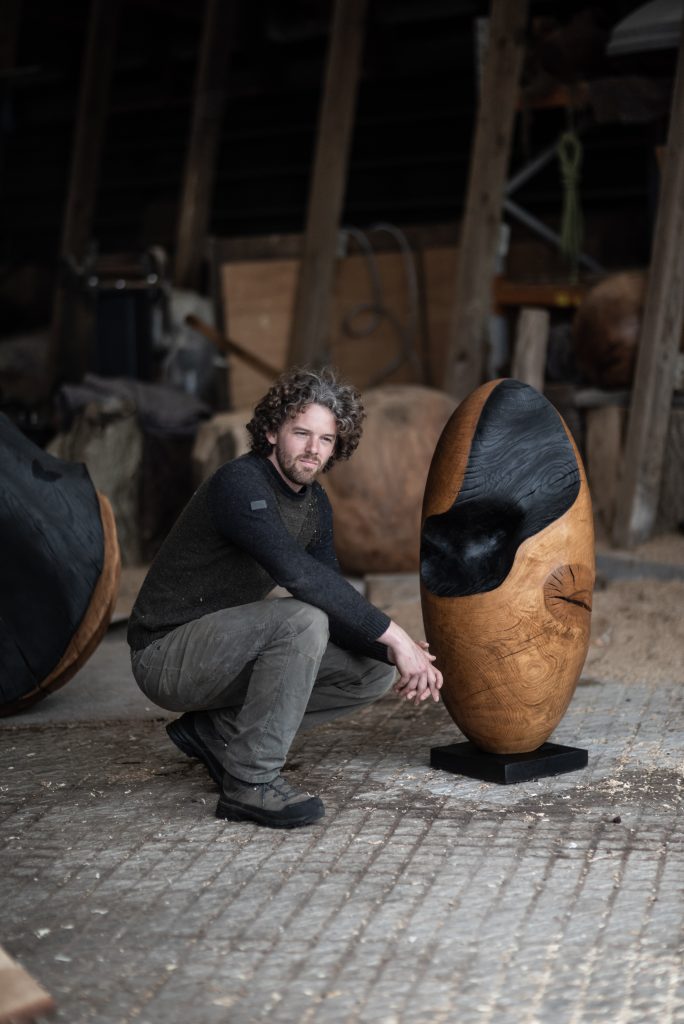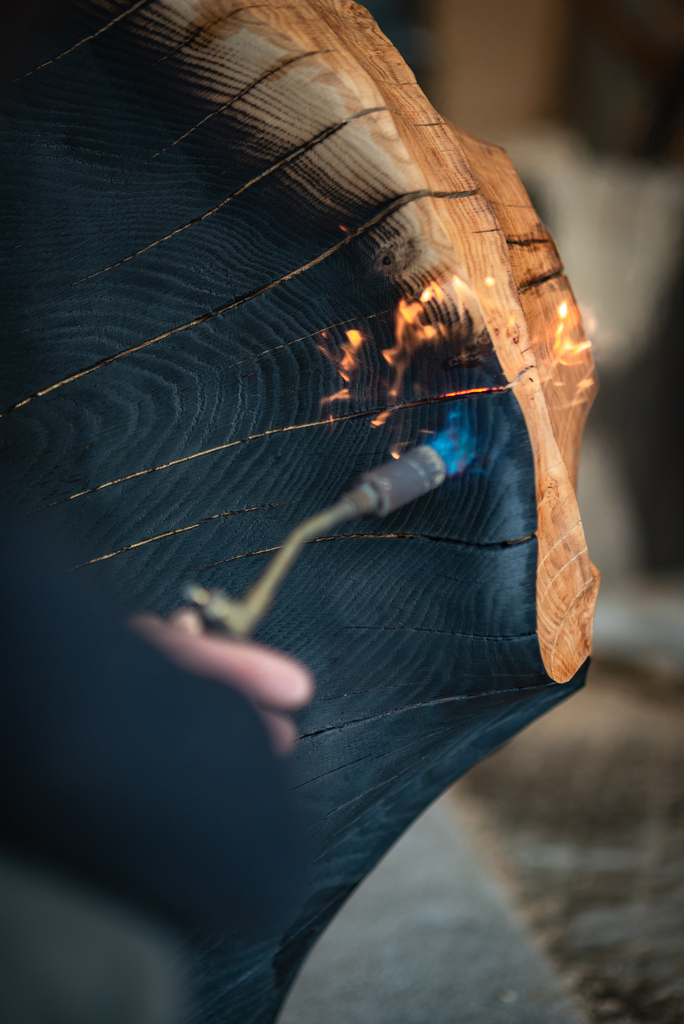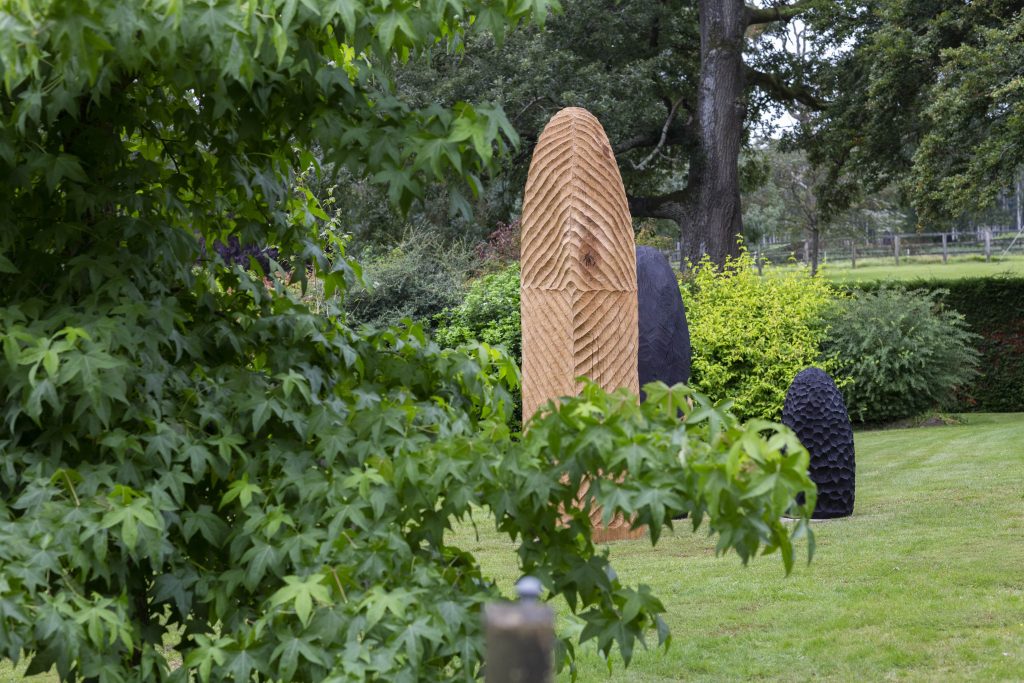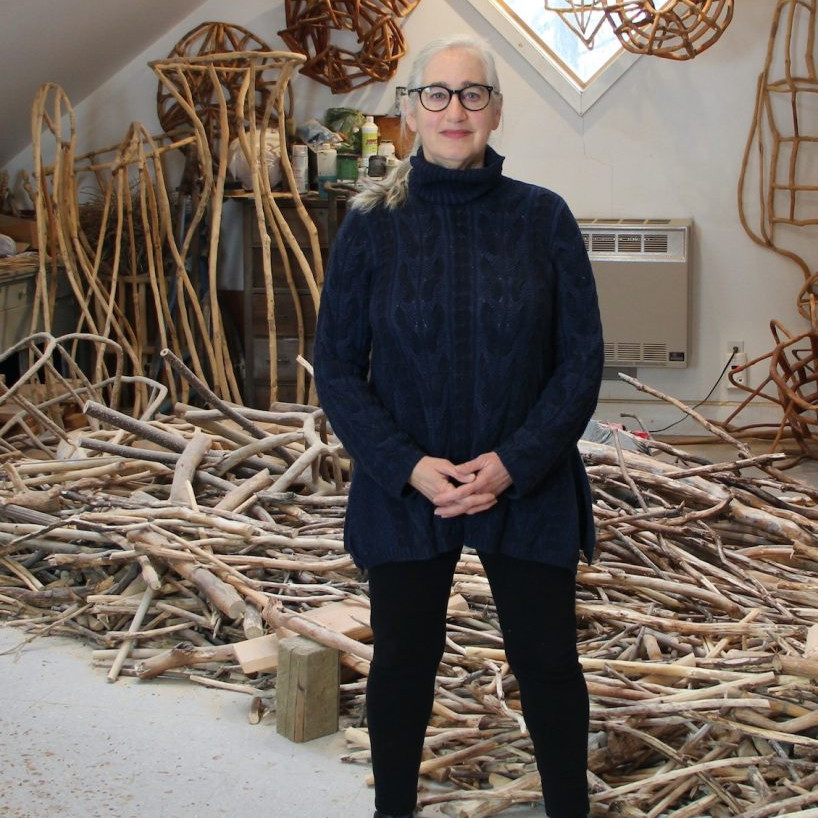Philip Walker Wood Sculptor
Explain the importance of both Qest and training with Alison Crowther.
My scholarship funding from Qest provides an opportunity to have dedicated time to learn new skills. An opportunity like this is important and valuable because it is so difficult to dedicate time consistently under normal circumstances, especially as an adult with bills to pay and responsibilities. I have worked with Alison for many years and so she has a very good understanding of how I learn and how I see things. I think this is important because it gives us such a head start on the relationship between teacher and student. Alison also understands the work I want to produce and obviously has incredible experience and knowledge of the material we both work with.
You have been very involved with Qest (Queen Elizabeth Scholarship Trust). Can you please explain the royal involvement?
Qest was found in celebration of the 90th birthday of HM Queen Elizabeth, The Queen Mother. Charles became a patron in 2017.
Discuss how the correct use of tools has been for the growth of your art?
Learning which tools will allow me to achieve the results I want has been crucial to the progression of my work. Some tools certainly have a correct way to be used, especially edge tools (chisels, planes etc.) and learning those ways will give optimal results. For me pushing the capabilities, exploring the versatility of power tools such as the Arbortech carving range, and perhaps sometimes using them not as they are intended, has allowed me to push my work in new directions.
What finally lead you to move from being a tree surgeon to sculpture?
A number of commissions came along at the same time which gave me the confidence to commit to sculpture work. Operating as a tree surgeon absorbs an enormous amount of energy and so it is difficult to do both at the same time and move either one forward.
Discuss your work in more detail.
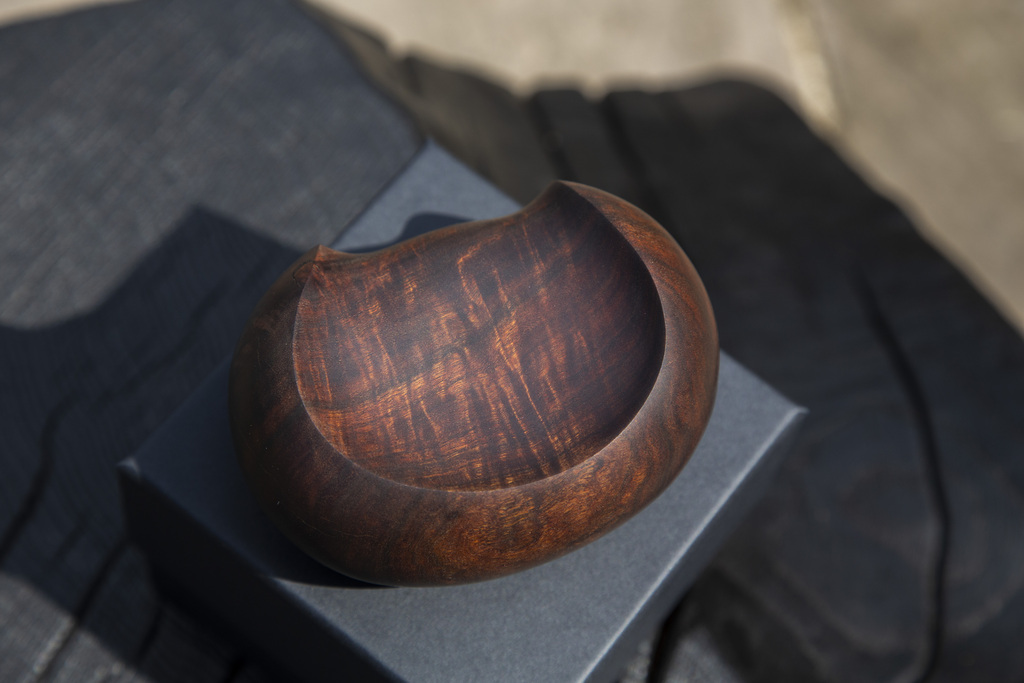
Form – Tactio V
Tactio V
The form of Tactio V, and others in this series of handheld pieces, is decided primarily by the way it sits in the hand. Each of the handheld pieces evolves as material is removed and the form is held and viewed, until it sits in a certain way that feels right. I might make minor tweaks to adjust the aesthetic.
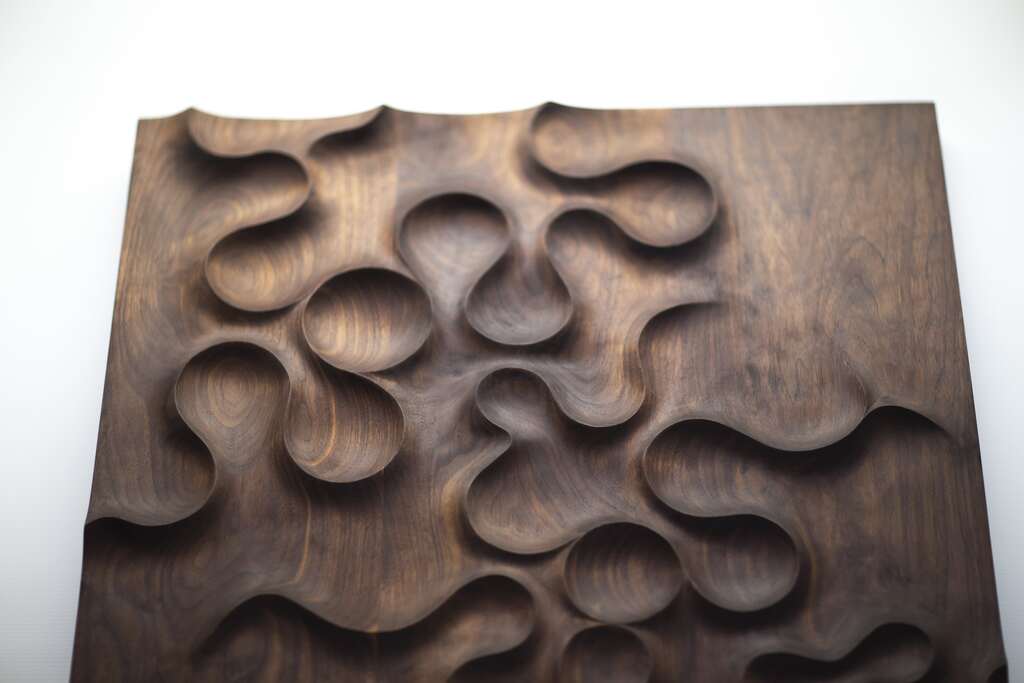 Flow – The Path of a Wandering Mind
Flow – The Path of a Wandering Mind
‘The Path of a Wandering Mind’ American Black Walnut.
The Path of a Wandering mind tells a story of dead ends, new beginnings and adventure. It has a beginning, middle and an open end. The carving for this piece was designed to flow from beginning to end in order to tell the story and this was achieved by using curves formed of very smooth lines, and the scale of the carving growing as the story progresses.
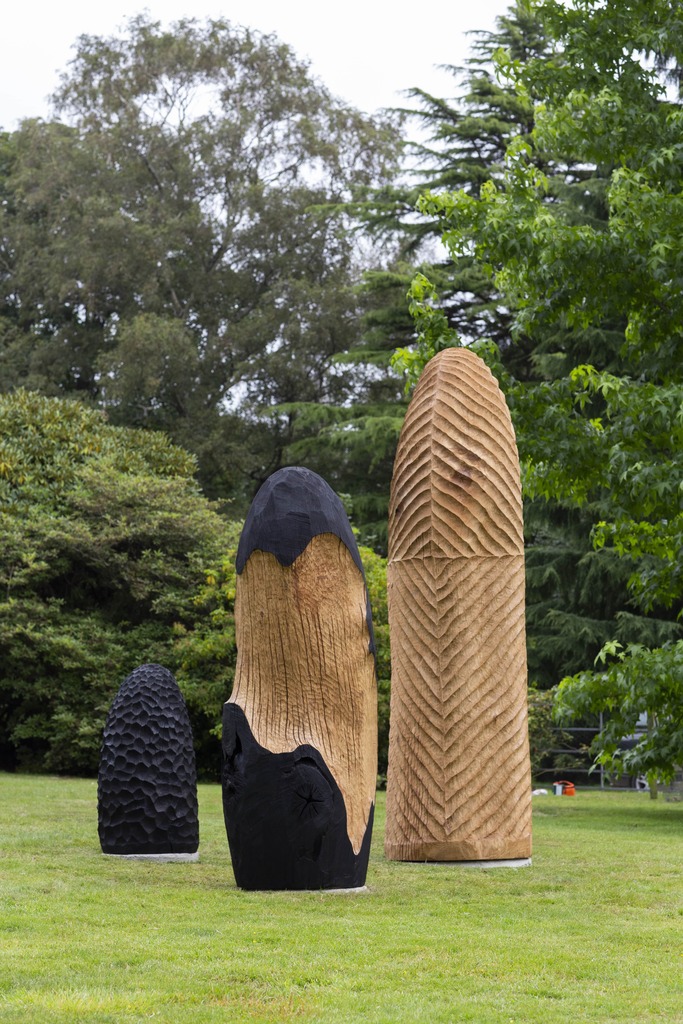 Texture – Trio of Oaks
Texture – Trio of Oaks
This commission was all about texture. I wanted to create lots of shadow to show textures that could be seen from a distance, but also micro textures that would provide interest up close. The largest of the trio stands 3 metres tall and so the carving needed to be deep.
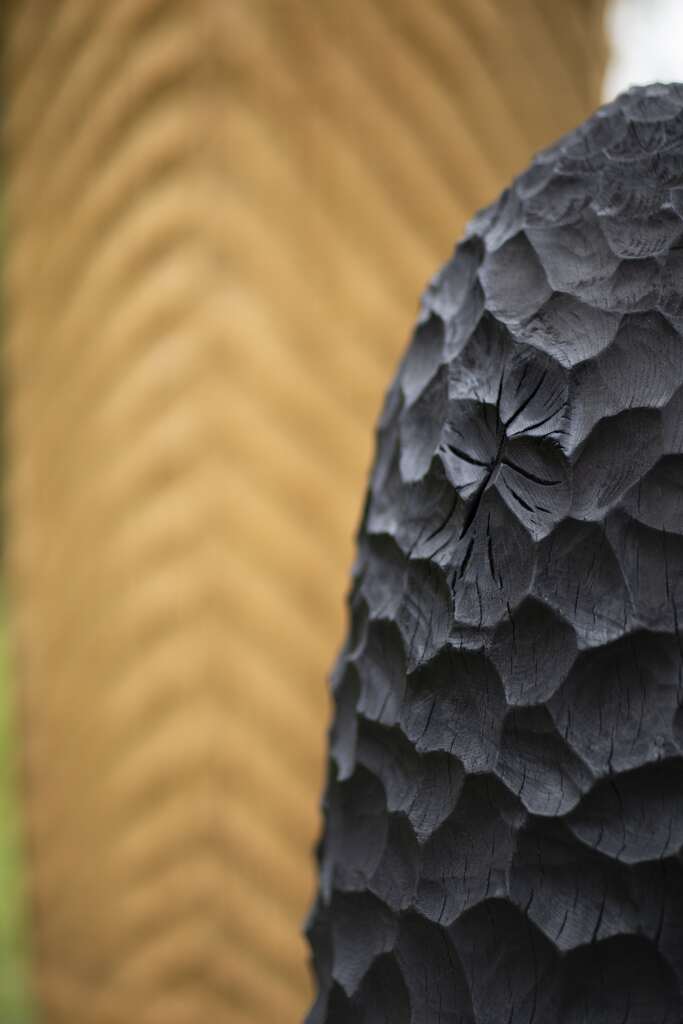
The scorched pieces, especially the smallest of the trio, have several textures. There is the texture I have carved, the texture created by the reaction of the wood being scorched, and the texture of the wood cracking as is dries and moves. The scale and deep carving give these pieces great presence in the garden.
Why is a chainsaw so important to your work?
Almost all of my work starts with a chainsaw. The raw material is delivered in log form and so chainsaws are used to efficiently remove material to a rough shape, or to section the log into smaller pieces for forms of varying scale.
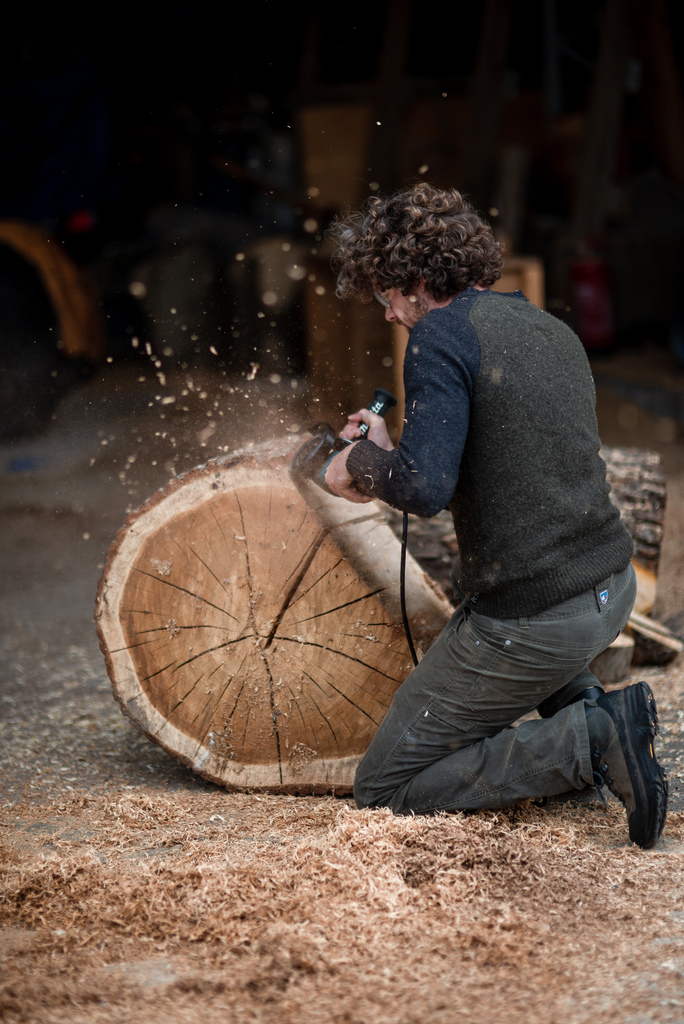 Making chips fly
Making chips fly
How many chainsaws do you have and how are they different to use and why?
I have three saws:
- A Stihl 661 used for big cuts and also milling timber together with an Alaskan sawmill attachment. This is a relatively heavy saw capable of taking a 36” bar. It is powerful and aggressive, but can be used to make accurate cuts.
- A Stihl 361 (my favourite). A midrange saw with a 20” bar, lightweight and easy to use at any angle. I still use this saw for roughing work but it can also be used for more accurate work.
- A Husqvarna T540. This is a top handled arborists saw, designed to be used in the canopy of a tree and hung from a harness. A very useful saw for small cuts and accurate work. Extremely powerful for its size. Left over from my climbing days.
The saws don’t differ much in use other than the size of timber they can cut.
Please take a specific tree that was felled due to damage that you have been able to give new life to.
Old tree
A large Redwood which died due to disease and had to be felled, from Ingleby Manor, North Yorkshire.
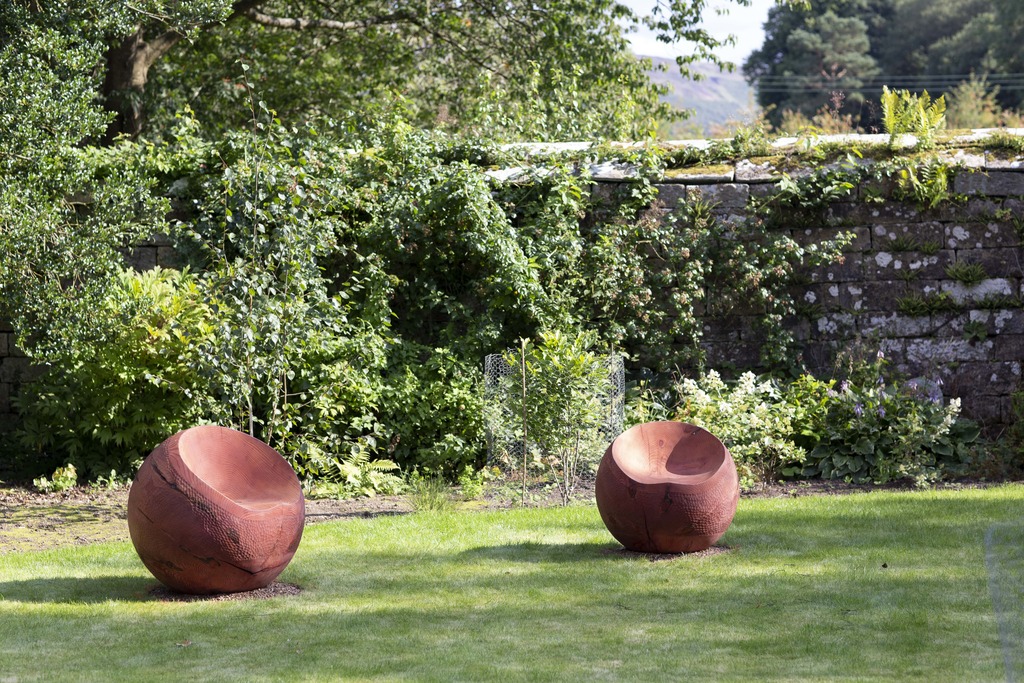 Ingleby Manor
Ingleby Manor
Your involvement
I went up to the site to process the timber into sections suitable for several sculptures, which could then be transported south to my workshop. The owners of the tree commissioned several large sculptures, a bench, two sphere seats and a large sphere split in half with carved faces. I also made a scorched wall hanging from an offcut of one of the spheres.
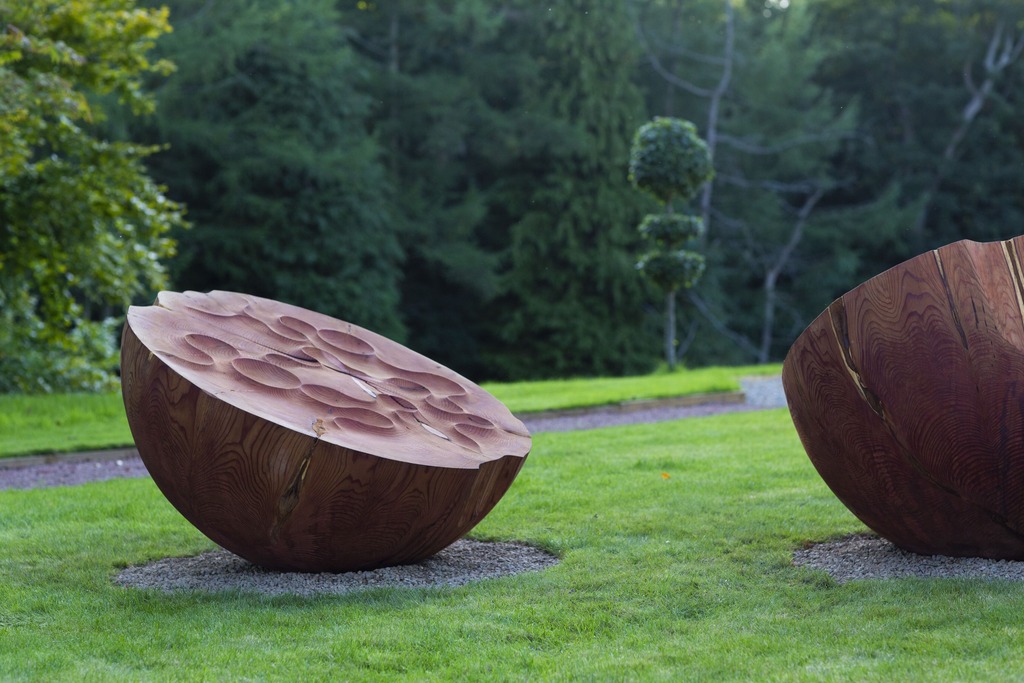 Ingleby Manor
Ingleby Manor
Where the sculptures are now
The sculptures are in the grounds back at Ingleby Manor, a stunning Manor house built in the 16th century, which is a family home and holiday cottages.
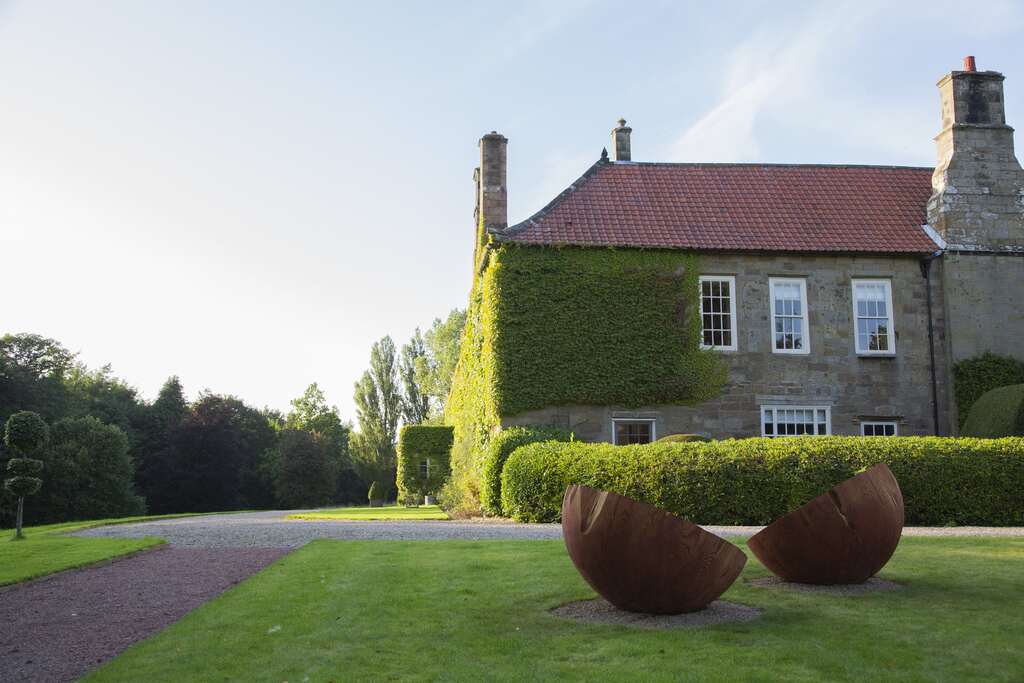
Ingleby Manor
How do you get your message across to people who have to remove a tree, that you could collaborate with them to give re-life?
Only through folks who know me from my time as a tree surgeon, or through Instagram. It would be great to find a better way of getting this out there as I think some are not aware of what can be achieved with a fallen tree.
After a tree surgeon has felled a tree, how long do you have to wait to be able to work on the wood?
You can work on the wood immediately if you choose to. The main consideration is moisture content, but time has little effect. A large log will give up very little moisture, other than right at the surface, over multiple years. It is only when that log is milled into boards or cut into smaller sections that it will begin to dry, as more surface area is exposed. Some species such as Ash naturally have a lower moisture content than others. The time of year the tree is felled plays a part in moisture content also. A tree felled over winter, whilst dormant, will have a considerably lower moisture content than a tree felled in late spring or summer.
There is a saying that goes something along the lines of “wait a year, let the tree know it’s dead”. Like all sayings passed down through generations it is probably a good idea based on a wealth of knowledge and experience, but I do not know the reasons or science behind it!
Discuss your work area.
Size
The workshop is not big enough, but whose workshop is?! It is a reasonable size at about 100 square meters, large enough to manoeuvre a forklift in as long as I am tidy. It is part of a much larger barn, originally built to house dairy cows, so long and narrow. It is open to the elements on one side and the roof leaks and drips condensation when cold. It has light and power, and I can make as much noise and mess as I like, so it suits me fairly well but is brutally cold in the winter.
Requirements you see as essential
As mentioned above, light, power and no one to bother me about noise. It is part of a larger farm with many commercial units. The landlord is great and always happy to lend a hand with the telehandler and removal of my ever growing pile of sawdust. They also turn a blind eye to my also ever growing collection of interesting logs. In turn I keep them supplied with firewood. The forklift, and room to manoeuvre it is essential to what I do.
Take one small sculpture and discuss.
Cloven
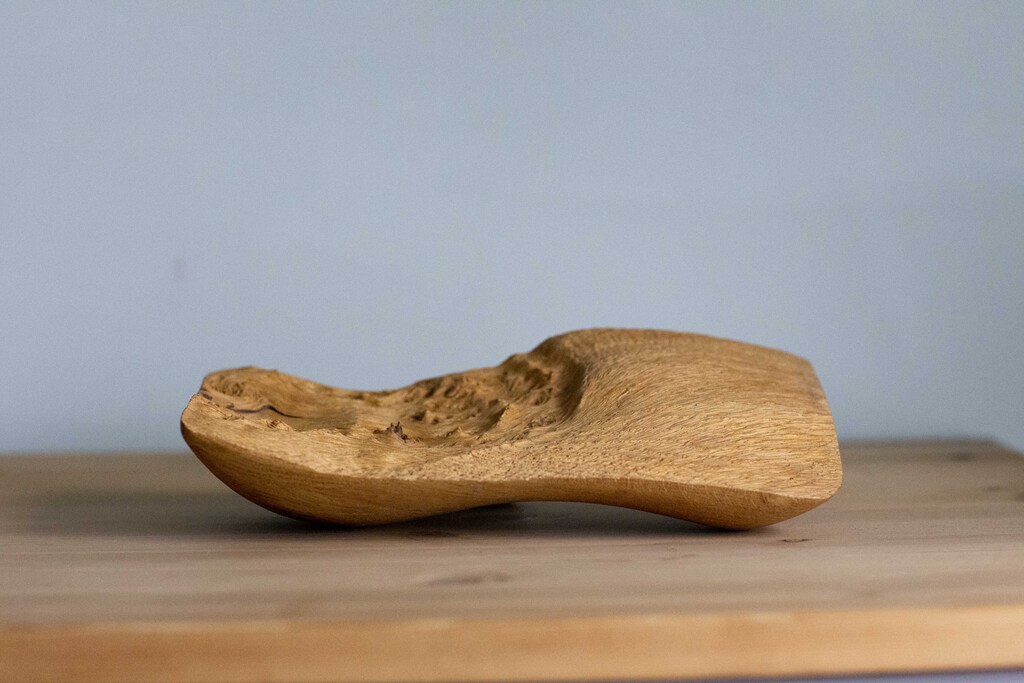 Cloven
Cloven
I am interested in the many methods and techniques used to expose the beauty of wood. The texture created by cleaving a select piece of timber is difficult to rival with any that I might force upon a piece. This method offers an opportunity to explore the interaction between the maker, his tools and the material itself.
Cloven is the first piece in a series I am currently working on that explores this interaction. The aim is to create a juxtaposition between an organic texture and the smooth form I have deigned to carry it.
Take one large sculpture and discuss.
In Solidarity
This pair were designed to sit together, with the carved lines of each flowing towards the other. They are made from a very knotty and interesting lump of English Oak. This was one of my first large commissions and the first large pieces finished entirely with gouges. At the time this was an ambitious design for my as it relied on precision. The form had to be precise, the marking out had to be precise and the carving had to be precise but the most challenging part was drilling the holes in the bases to accept the stainless steel on which they are mounted. It was a great introduction to the complexity of hand carving and the reality of working with a heavy material that does not always behave as desired. I am very proud of this piece and grateful for trusting and patient clients!
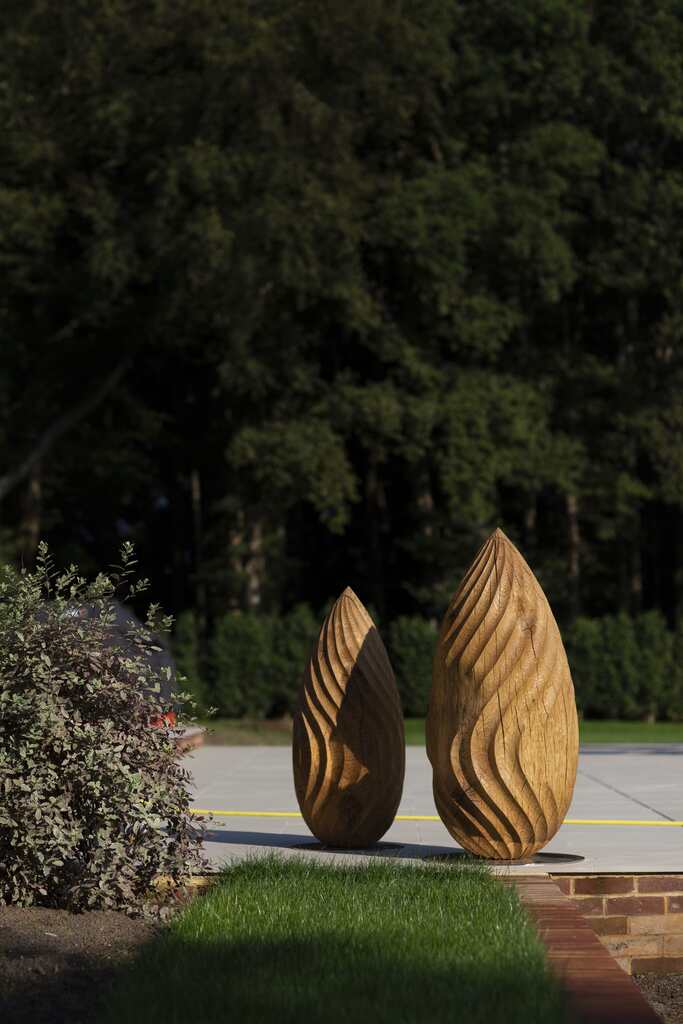
In Solidarity
How do you explain to people you meet what your art practice is?
With my background as a tree surgeon most people assume my work will be representative chainsaw sculpture and so I try to explain that the chainsaw is just a tool used for roughing out, followed by many other tools to refine the finish, and that my work is contemporary. It is so easy to pull out my phone and show my Instagram feed, which lays the groundwork for an easier conversation about processes and inspiration.
What was the first tree you remember climbing also the latest?
The first tree I remember climbing was a tall competing Ash with a sparse canopy competing with other trees within the forest. It was early in climbing career and I had been sent up it by the boss as an exercise in accessing the canopy from the ground using a bunch knot (a way of throwing a cleverly knotted coil of rope over a branch with the tail end returning to you in order to ascend to that branch) and change overs (using two ropes to alternate between as you throw to the next branch and make you way up the tree). At this stage I was not very good at these techniques and was not allowed down until I had reached the top. It was very frustrating, but all part of the journey.
The latest tree I climbed was a crappy, ivy covered silver birch this past weekend as part of a volunteer work party at a lake I fish at. Not very exciting, but any tree work with mates and little in the way of time pressure is good fun!
What recommendations would you give to hesitant parents about safe tree climbing?
With the right equipment and the right people to learn from, it can be very safe. The technology surrounding the equipment used has come on leaps and bounds over the last couple of decades. Climbing equipment has never been safer (or shinier and expensive!). For perspective climbers, put time into learning about the bio mechanics of trees, tree biology and fungi, pests and diseases. All of which will give you a better chance of seeing a failure before it happens. Good judgement is key. Adding chainsaws and rigging into the mix changes things entirely. Learn good techniques and surround yourself with a crew you trust!
What is the life expectancy of one of your sculptures that are outside?
25 years, potentially much longer.
Expand on the sculpture, ‘Darkness Within’ and the black pattern.
The original Darkness Within and subsequent pieces in the series represent the way I was feeling at the time. I think many can relate to a feeling of darkness within, whether it be pain, anxiety or fear. This sculpture and series represents that feeling but not in bad or sad way, simply in recognition and to put it out there to be accepted.
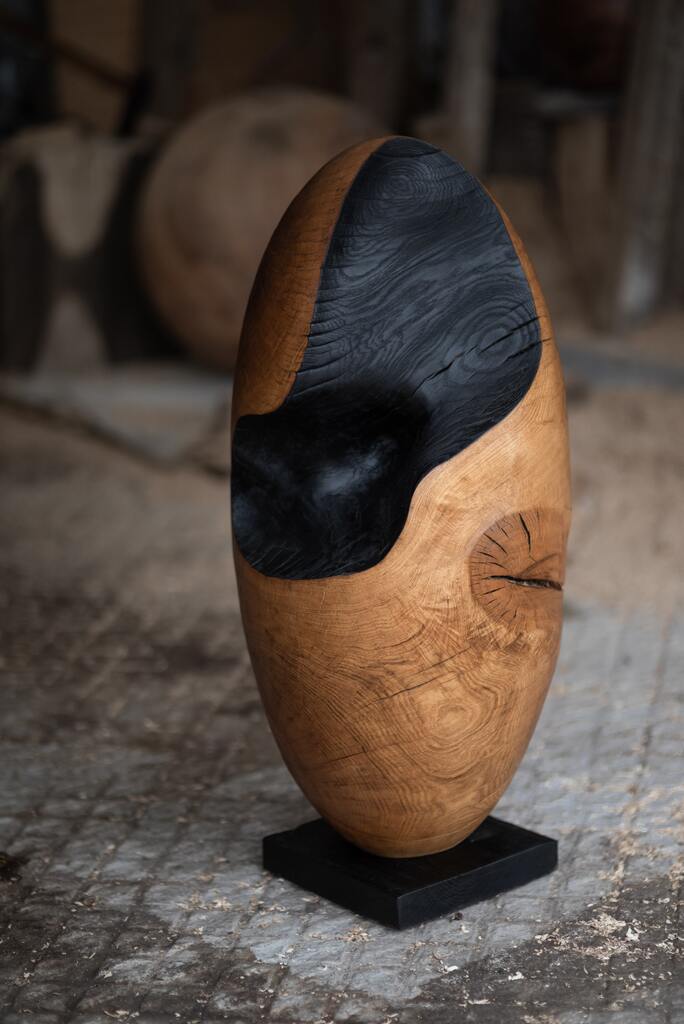
Detail of ‘Darkness Within’. English Oak. Photo: Sarah Sheldrake
The work itself is some of my favourite. I love the contrast and I love the process. I enjoy the transformation of the wood in colour and texture as the flame and heat pass over it. I try to exploit natural cavities in the wood, or create them using the contours of the growth rings.
How is some of your work used as furniture – e.g., Beech Coffee Table.
Alot of my work is functional as seating or tables. I think it is easier for some clients to justify functional sculpture and I am very happy to combine art and functionality. It often presents challenges as useful objects tend to have rules for dimensions which natural materials don’t always accommodate, but therein lies the fun.
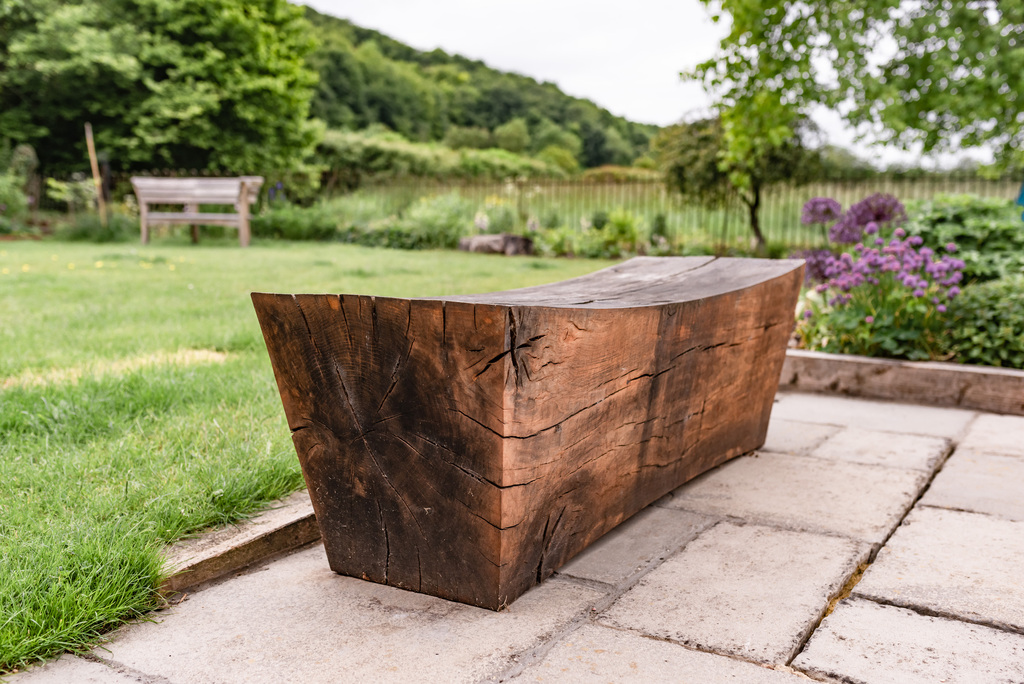
Solid Oak bench seat. Photo: Harvey Coates
Wood has been used to create furniture for centuries, and a fallen tree has provided seating for weary travellers for even longer. I think, we connect wood and furniture as though it has always been, it feels right.
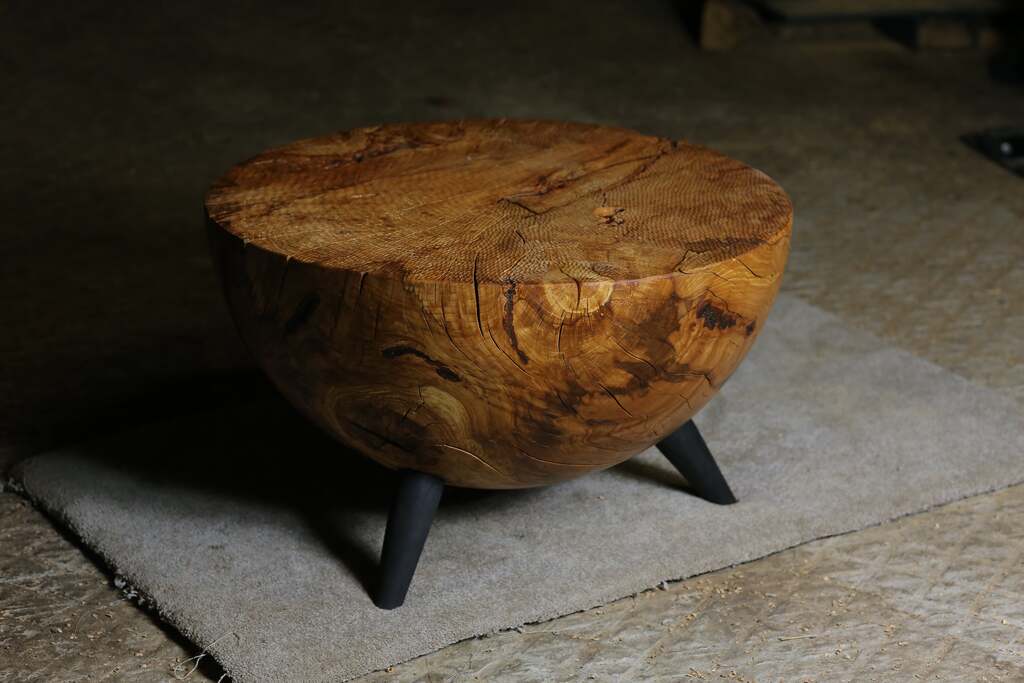 Beech Coffee Table.
Beech Coffee Table.
‘The Path of a Wandering Mind’ what lead you to using the meandering lines?
Experimentation with carving techniques to create shadow and flow.
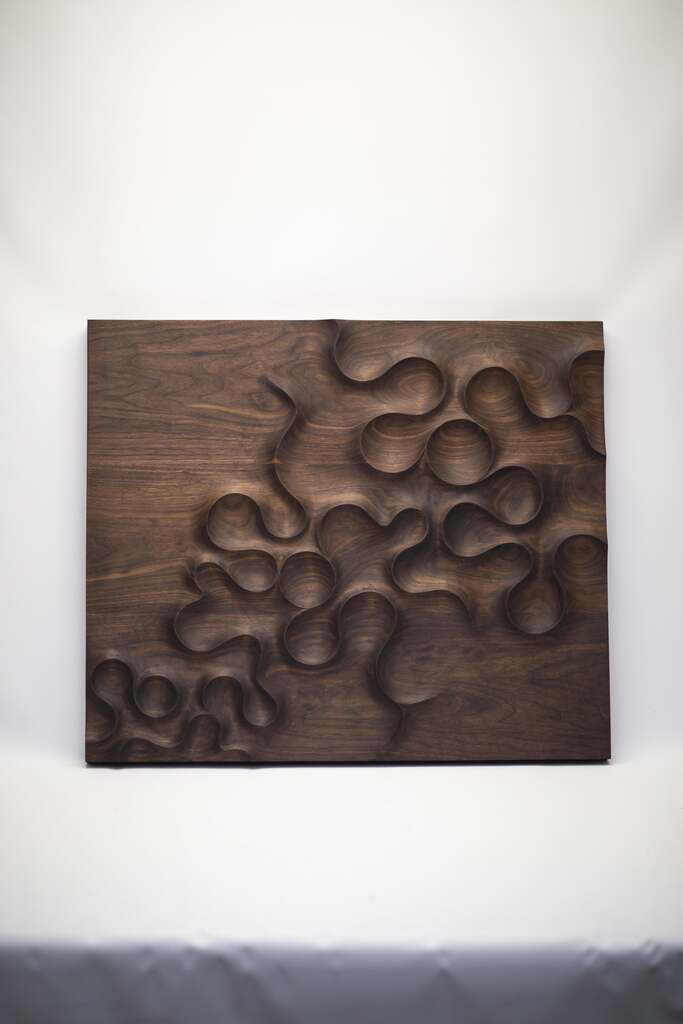 ‘The Path of a Wandering Mind’ American Black Walnut.
‘The Path of a Wandering Mind’ American Black Walnut.
Are there any woods you have not worked with, but you would love to and why?
There are many I would like to work with but one in particular springs to mind, English Elm. This species once dominated the British landscape but was decimated by Dutch Elm disease in the 70’s. The trees grew large with a similar form to Oak. The timber is a rich brown with contrast between summer and winter growth, creating beautiful patterns in figured pieces. Although most were felled before I was born I still feel a nostalgia, probably mostly through stories I have been told by past generations of tree surgeons and carpenters.
Contact:
Philip Walker, Petersfield, UK
philiptreewalker@gmail.com
Deborah Blakeley, Melbourne, Australia
Interview by Deborah Blakeley, January 2023
Think a colleague or friend could benefit from this interview?
Knowledge is one of the biggest assets in any business. So why not forward this on to your friends and colleagues so they too can start taking advantage of the insightful information the artist has given?
Other artists you may be interested in:


